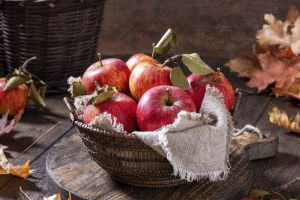Have you ever tasted something that's both sweet and tangy at the same time, making you instantly crave more?
That’s the magic of tamarind! Today, we’re taking a closer look at this fascinating fruit — where it grows, how it’s cultivated, and why it's a must-try for all of us.
Where Tamarind Thrives Best
Tamarind trees absolutely love the sun and heat. We find them growing best in regions with long hours of sunlight, high temperatures, and distinct wet and dry seasons. These trees are tough — they can handle dry spells and love hot, tropical climates. Ideally, tamarind flourishes where the average temperature stays between 64°F to 70°F (18–21°C), and even the coldest months don't drop below 37°F (3°C).
They’re deep-rooted, fast-growing, and not picky about soil. Whether it's sandy or clay-like, acidic or alkaline, tamarind trees adapt easily. However, they thrive best in slightly acidic alluvial soil. That’s why we often spot them standing proud on hillsides, along roadsides, and even near our homes.
How Tamarind Grows and Blooms
Every spring, usually around April or May, tamarind trees wake up with a burst of green leaves, followed by gorgeous blooms. By early summer, between May and June, they blossom for a long stretch. Their leafy branches grow rapidly during the hot months, then slow down as autumn approaches, finally shedding leaves by the time spring rolls around again.
When it comes to fruit, we see them starting to form between September and November. These fruits tough it out through winter and mature between February and April of the next year. Interestingly, tamarind trees can bloom more than once a year, but it's the springtime flowers that give us the largest, juiciest, and best-quality fruits.
Natural and Human-Guided Propagation
In nature, tamarind trees mostly rely on bees for pollination. Each flower carries both male and female parts, but it needs a little help to spread pollen around. Although tamarind trees are self-fertile, they actually do better when cross-pollinated.
Young tamarind seedlings often struggle to grow under the parent tree's thick canopy, so animals (and humans like us!) play a big role in spreading their seeds. However, these seeds have a very hard outer shell, making natural germination slow and tricky unless conditions are perfect.
How We Cultivate Tamarind
When we want to grow tamarind ourselves, we usually start from seeds. It’s best to pick seeds from fully ripe pods from healthy, productive trees. The seeds should be blackish-brown, plump, and glossy. Before sowing, soaking the seeds in warm water can give them a little push to sprout faster.
Another popular method is grafting. This technique ensures that the new trees carry the exact same tasty qualities of the parent tree. Grafting is typically done in early spring, around March or April. After about three months, these young trees are ready for planting.
Best Practices for Planting and Care
We should choose sunny spots with deep, rich soil for planting tamarind. Even rocky hillsides or sandy soil can work if managed properly. On dry slopes, it’s important to build small ditches or ridges to capture rainwater for the young trees.
When planting, we dig a good-sized hole, mix in compost, lime, and a little phosphate fertilizer, and gently place the young tree in, being careful not to damage the roots. After planting, watering generously ensures a strong start.
Spacing matters too — planting trees about 20–26 feet (6–8 meters) apart allows enough room for each tree to grow tall and wide without crowding.
Ongoing Care and Maintenance
After planting, tamarind trees don't demand much, but regular care makes a huge difference. Fertilizing a few times during the rainy season with nitrogen, phosphate, and potassium fertilizers helps trees grow strong and bear lots of fruit.
We also need to clear around the trees, especially in late summer and early fall. Pruning is another key task — by trimming the tops when the tree is about 2.5–3 feet (70–100 cm) tall, we encourage bushier growth, creating a round, healthy crown. Every year, it’s good practice to cut off dead or overcrowded branches to keep the tree airy and productive.
Harvesting the Sweet and Tangy Rewards
By the second spring after flowering, the tamarind pods dry out naturally. That’s our signal — it’s harvest time! We must be careful while picking to avoid damaging the delicate pods or the branches. Once harvested, tamarind pods store well at room temperature. They just need to be cleaned and dried properly before packing.
Common Issues and Solutions
Tamarind trees are tough but can occasionally face challenges like sooty mold during the rainy season or powdery mildew in early fall. Thankfully, regular spraying with safe, plant-friendly treatments can keep these problems under control. Beetles and longhorn bugs are the main pests, but a few preventive measures during the end-of-year cleaning can make a big difference.
Why We All Should Love Tamarind
Tamarind isn’t just a treat for our taste buds. It’s packed with organic acids, 17 types of amino acids, minerals, and B vitamins. Its pulp is deliciously tangy and sweet, often eaten fresh or used to make jams, pickles, candies, and sauces. In many places, tamarind juice is a refreshing drink loved by people of all ages. Even the seeds can be pressed for edible oil!
Ready to Try Tamarind?
So, Lykkers, have we made you curious enough to try tamarind yet? Whether it's snacking on fresh pods, sipping a tangy tamarind drink, or using it in your favorite dishes, tamarind is one flavor adventure you don’t want to miss. Let’s explore more delicious discoveries together soon — what should we dive into next time?


